Occupational Safety Training for Operating Crawler Excavators
99,000 ₫
Note: The above price is calculated for one person and may fluctuate depending on the number of participants in the course and market dynamics. For more accurate pricing support, please refer to the pricing table or contact our consulting staff directly.
Occupational safety is an important issue when operating a tracked excavator and needs to be addressed promptly to ensure the health and safety of workers and enhance the reputation of businesses here. The Occupational Safety Training course is one of the effective solutions to raise awareness of how to prevent workplace accidents for workers when operating a tracked excavator.
Table of Contents
Toggle1. Overview of Crawler Excavators
a. What is a Crawler Excavator?
A crawler excavator, also known as a crawler digger, is an excavating machine that uses tracks instead of wheels like other excavators. Tracks allow the machine to move across difficult terrain, especially soft soil, red soil, or marshy areas. This makes crawler excavators suitable for construction, mining, road and bridge projects, and other applications requiring flexible movement on challenging ground conditions.
These advantages make crawler excavators a popular choice in construction and mining industries.

b. Operating Principle of a Crawler Excavator
The operating principle of a crawler excavator can be described as follows:
- Engine and Power System: Crawler excavators are equipped with powerful engines, usually diesel, to provide energy for the machine’s various systems.
- Track System: The tracks are driven by a hydraulic motor system. They are designed to withstand heavy loads and move effectively on uneven and challenging terrain.
- Control System: The excavator’s control system typically uses sensors and hydraulic valves to operate the boom, arm, and attachments.
- Boom and Digging Arm: The boom moves up and down and rotates around its axis to perform digging, lifting, and material handling tasks. It is usually controlled hydraulically for flexibility and precision.
- Lifting and Adjustment System: A hydraulic lifting system adjusts the depth and angle of the boom, allowing the excavator to dig at specific depths and angles.
- Bucket System: The bucket is the main part of the boom, used for digging, scooping, and lifting materials. Its size and shape vary depending on the specific task.
- Wash System: Some crawler excavators have a wash system to clean excavated material, improving operational efficiency and reducing wear.

c. Industries that Use Crawler Excavators
Crawler excavators are widely used across industries requiring deep digging and flexible movement on difficult terrain. Key sectors include:
- Construction: Excavating soil, moving sand, preparing foundations, and performing deep or heavy excavation tasks.
- Mining: Extracting and transporting materials such as coal, metal ores, sand, and rock.
- Waste Management: Moving, processing, and sorting waste.
- Energy: Construction and maintenance of power plants and preparing sites for renewable energy projects.
- Transport and Roadworks: Excavating soil and constructing infrastructure for roads and bridges.
- Agriculture: Digging canals, preparing soil, and other agricultural projects.
- Irrigation Projects: Building dams, digging trenches, and constructing drainage systems.
2. Overview of Safety Training for Operating Crawler Excavators
a. What is Occupational Safety Training?
- Occupational safety training for operating crawler excavators consists of courses designed to raise awareness of accident prevention for workers. Workers who directly operate crawler excavators belong to Group 3.
- Safety training helps workers recognize hazards and reduce risks of occupational accidents during their work.
REGISTER FOR OCCUPATIONAL SAFETY TRAINING SERVICE
b. Training Duration
Initial Safety Training Duration:
- The total training duration is at least 24 hours, including assessment time.
- 8 hours of theory on policies and labor safety laws.
- 8 hours of theory on basic occupational safety knowledge.
- 4 hours of theory on specialized training content.
- 2 hours of practical exercises on specialized content.
- 2 hours for theoretical assessment at the end of the course.
Training centers may divide the schedule into multiple sessions depending on workers’ availability. Typically, there are 6 sessions over 3 days if the company arranges continuous learning time.
Periodic Safety Training Duration:
- Before the occupational safety card expires, workers must complete a periodic safety training course to renew it. The periodic training duration must be at least 50% of the initial training duration.
Explanation: The total periodic training time is at least 12 hours, including assessment. After completing the course and passing the test, workers will have their safety card renewed.
c. Training Content
| No. | TRAINING CONTENT | TRAINING DURATION (HOURS) | |||
| Total | Including | ||||
| Theory | Practice | Assessment | |||
| I | Policies and Labor Safety Laws | 8 | 8 | 0 | 0 |
| 1 | Overview of regulations and legal documents on occupational safety. | 6 | 6 | ||
| 2 | Standards and technical regulations on occupational safety. | 1 | 1 | ||
| 3 | Specific regulations from state management authorities regarding construction, expansion, or renovation of facilities and the safe use and inspection of machines, equipment, and hazardous materials. | 1 | 1 | ||
| II | Basic Occupational Safety Knowledge | 8 | 8 | 0 | 0 |
| 1 | Basic knowledge of workplace hazards. | 4 | 4 | ||
| 2 | Methods to improve working conditions. | 1 | 1 | ||
| 3 | Safety culture in production and business. | 1 | 1 | ||
| 4 | Rights and obligations of employers and employees; safety policies; duties of safety officers. | 1 | 1 | ||
| 5 | Safety regulations, signage, proper use of safety equipment, first aid skills, and occupational disease prevention. | 1 | 1 | ||
| III | Specialized Training Content | 6 | 4 | 2 | 0 |
| Comprehensive knowledge of machinery, equipment, hazardous materials; risk analysis, evaluation, and safe working procedures. | 6 | 4 | 2 | ||
| IV | Final Assessment | 2 | 2 | 0 | 0 |
| Total | 24 | 22 | 2 | ||
See more training content of 6 groups
d. Occupational Safety Card
After completing the safety training course and passing the assessment, workers will be issued an Occupational Safety Card (commonly referred to as Group 3 Safety Certificate).
The Group 3 card shows personal information such as name, date of birth, job, and work environment, along with training duration, a red stamp, and signature confirming course completion.
According to Clause 2 of Article 24 of Decree 44/2016/ND-CP, there are two cases:
- If the worker has an employment contract with the employer, the employer must sign, stamp, and endorse the safety card after the worker completes training and passes the test.
- If the worker is freelance or seasonal and does not have an employment contract, the training unit must sign, stamp, and endorse the safety card after the worker completes training and passes the test.

3. Hazards When Operating Crawler Excavators
Operating a crawler excavator requires full attention and professional skills. Below are some common hazards that operators may encounter:
- Serious Risk to Operators: The risk of serious accidents is the main hazard when operating a crawler excavator, especially if the operator does not follow safety rules and guidelines.
- Risk to Nearby Workers: Workers around the excavator may be at risk if safety rules are not followed or if operational mistakes occur.
- Mechanical Failures and Technical Issues: Industrial machinery such as excavators may experience technical failures or breakdowns, especially if not properly maintained. This can create dangerous situations for operators and nearby workers.
- Risk of Tipping and Loss of Balance: Crawler excavators often work on challenging terrain and may tip over, especially on slopes or uneven ground.
- Collision and Traffic Accidents: During transportation between sites, crawler excavators may pose a collision risk and can cause traffic accidents if not safely operated on the road.
- Electrical Hazards: Working near power lines carries the risk of collisions and electrical hazards.
- Risk of Falling and Loss of Safety: Operators must follow safety rules when entering and exiting the cabin and take care to avoid falling from heights.

4. Accident Control Measures for Operating Crawler Excavators
To control and minimize occupational accidents when operating crawler excavators, several important measures and safety rules must be implemented. Here are key accident control measures:
- Training and Instruction: All operators must receive comprehensive training on safety and operating techniques for crawler excavators. They need to understand basic safety rules, work procedures, and emergency handling.
- Risk Assessment: Conduct risk assessments before each task to identify and minimize accident risks. This includes reviewing the work terrain, the excavator’s condition, and other risk factors.
- Regular Maintenance: Perform regular maintenance on excavators to ensure all components and systems function properly. This prevents technical failures and reduces safety risks.
- Use of Protective Equipment: Ensure operators and nearby workers wear protective gear such as helmets, safety boots, gloves, and protective clothing.
- Maintain Safe Distances: Always keep a safe distance between the excavator and other workers or vehicles to prevent collisions and accidents.
- Follow Traffic Safety Rules: When moving through public areas or near roads, operators must follow traffic safety rules and ensure warning signs are properly used.
- Terrain Control: Operators must monitor the terrain to avoid tipping and loss of balance, especially on slopes or uneven surfaces.
- Electrical Control: Avoid working near power lines and ensure the excavator is checked to prevent collisions with electrical sources.
- Safe Material Handling: Handle materials carefully during lifting and transport to prevent accidents and injuries.
- Compliance with Industry Safety Rules: Follow all safety regulations and local industry standards to ensure a safe working environment.
- Regular inspection of crawler excavators to detect safety issues such as wear, mechanical failures, or damage early, reducing occupational accident risks.
5. Benefits of Occupational Safety Training
An Toàn Nam Việt provides enterprises with the following benefits upon completing occupational safety training courses as regulated in Decree 44/2016/ND-CP on occupational safety and hygiene:
- Workers can identify potential occupational hazards and take preventive measures to avoid accidents.
- Enterprises can establish risk prevention measures in production, operation, and maintenance processes.
- Reduce costs associated with potential workplace safety risks.
- Uninterrupted production increases labor productivity and product quality.
- Ensure compliance with labor safety laws, avoiding legal risks.
- Enhance professionalism and reputation, elevating the enterprise’s brand.
Nam Viet’s training courses are solutions to prevent external factors from endangering individuals, helping them avoid injuries or, in severe cases, fatalities.
REGISTER FOR OCCUPATIONAL SAFETY TRAINING SERVICES
6. Customer Feedback After Completing the Training Course
An Toàn Nam Việt has many years of experience accompanying numerous enterprises in Vietnam, especially in the southern provinces. This responsibility is extremely valuable to Nam Viet, which is why our Occupational Safety Training is increasingly professional. The motivation for Nam Viet’s growth comes from positive feedback as well as suggestions from enterprises. Below are some feedback examples from our clients.
Bac Nam E&C Construction Investment Joint Stock Company
“My first experience with An Toàn Nam Việt surprised me with their 24/7 support from the consulting team. The class organization was quick and convenient for our company. Thank you very much for Nam Viet’s service!”
Hoa Dat Construction and Trading Joint Stock Company
“Nam Viet’s service has helped us a lot in simplifying occupational safety and completing safety documents for work processes. The consulting team was enthusiastic and timely in answering our questions. 5 stars for Nam Viet!”
See more customer interviews after using Nam Viet’s services
7. Occupational Safety Training Capacity of An Toàn Nam Việt
An Toàn Nam Việt is a reputable and high-quality occupational safety training center in Vietnam. Our courses are continuously held at manufacturing workshops, factories, or construction sites nationwide (all 63 provinces of Vietnam).
REGISTER FOR OCCUPATIONAL SAFETY TRAINING SERVICES
Occupational Safety Training License
- An Toàn Nam Việt has been inspected and certified by the Department of Safety under the Ministry of Labor, Invalids and Social Affairs for eligibility to conduct occupational safety and hygiene training. This further strengthens our capability in occupational safety training.

Training Materials and Lectures
- Before being used in occupational safety courses, all training materials are reviewed to ensure accurate knowledge and practical effectiveness.
- Teaching methods are standardized according to An Toàn Nam Việt’s guidelines, developed by experts in occupational safety and hygiene training to ensure optimal knowledge transfer to trainees.
Facilities
- Controlling classroom conditions enhances teaching efficiency and trainee knowledge retention.
- Our training facilities include spacious classrooms meeting standards for area, lighting, and training equipment.
8. Nationwide Reputable Occupational Safety Training Center
At An Toàn Nam Việt, we prioritize professional dedication to occupational safety training. Imparting knowledge to workers on self-protection equips them with safety skills for their livelihood, contributing to nation-building.
To ensure effective training, we meticulously prepare everything: tools, teaching equipment, manuals, audiovisuals, and lighting.
Our trainers are experts with years of experience, including research on hazard identification across industries and prevention methods.
Lectures are practical, engaging, and easy to understand, helping workers comfortably absorb knowledge while complying with Decree 44/2016/ND-CP.
As a result, workers learn preventive measures, self-protection techniques, and practical applications.
Our training center is proud to provide professional occupational safety training with these advantages:
- Competitive training costs with assured quality.
- Flexible training schedules to fit enterprise production.
- Quick and compliant certification procedures.
- Experienced trainers with long-term expertise.
- Classroom conditions optimized for teaching efficiency and knowledge retention.
- Lectures tailored to enterprise occupational safety needs.
- Dedicated, professional support for clients, ensuring accuracy and speed.

9. Additional Occupational Safety Training Materials
- Safety materials for operating crawler excavators
- Occupational safety training material set
- Occupational safety test set
- Multiple-choice test for operating crawler excavators
- Safety training slides for operating crawler excavators
1 review for Occupational Safety Training for Operating Crawler Excavators
No comments yet

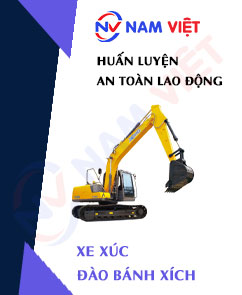
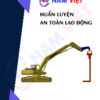






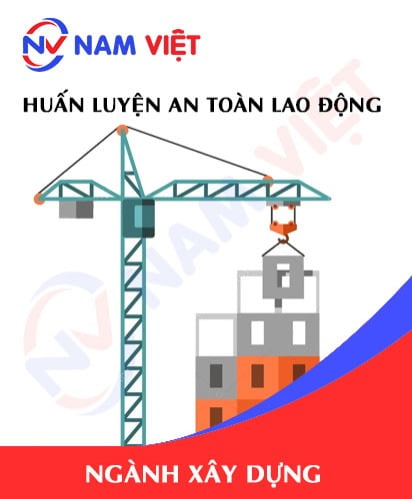


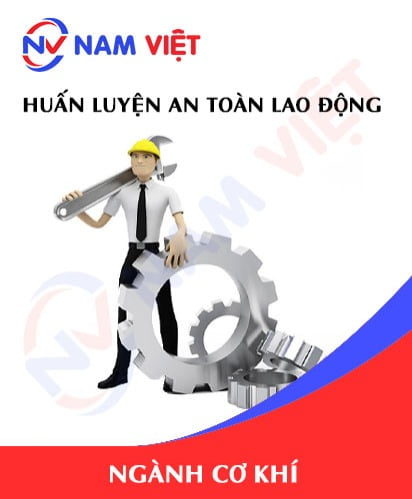

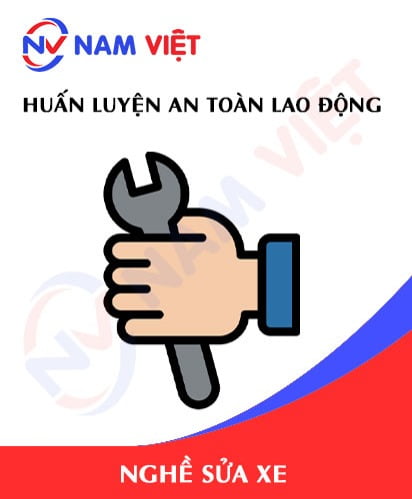
phanminhhang341
Very good occupational safety training service, the instructor teaches very lively and easy to understand!